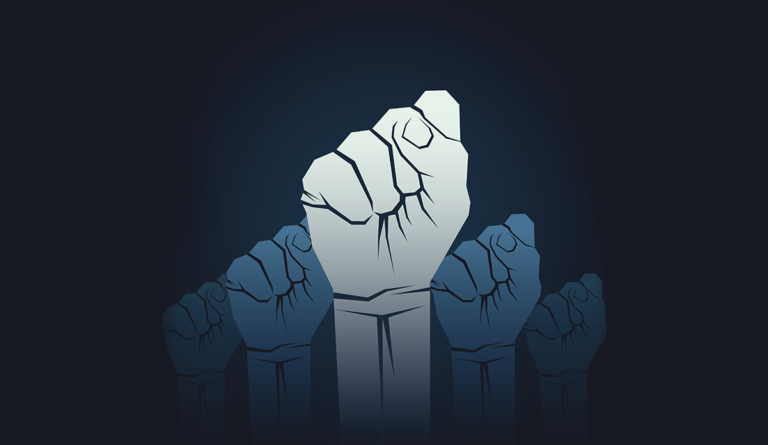Labor Unions and Our Health
If unions indeed protect against deaths of despair across diverse communities, understanding how they do so remains an important question.

Read Time: 3 minutes
Published:
Large coalitions of workers fought for collective rights and visibility for the labor unions of the 1960s and 70s. In the United States, these workers won a range of protections, including healthcare, better hourly wages, and layoff protections. The least empowered workers, like minorities or low-wage laborers, could receive recognition and respect through union participation. But union demographics changed and membership shrank since unions’ peak five decades ago, and worker’s rights have waned as well.
The decline in labor union density is directly related to a widening income inequality in the US. In 1983, 27% of all workers aged 25-64 were part of a union. In 2017, that number was 13%. Wages have remained stagnant with union negotiating power sidelined; concurrently, the middle class has narrowed.
Income inequality is unequivocally linked to poorer health. Life expectancy for poorer citizens has not increased as the wealth gap has widened. Wealthier citizens continue to get healthier.
Jerzy Eisenberg-Guyot and colleagues studied the relationship between labor union density – or the number of people represented in a union in a given area – and mortality to measure how changes in union membership affect health. The researchers used the Centers for Disease Control and Prevention’s state-level mortality data and labor union data from the Current Population Survey from 1986-2016.
Weaker labor unions can’t meaningfully address income inequality or fight for workers, yet, even in their disempowered state, unions retain an important social role.
They found large disparities in union density. Union membership is unevenly distributed among states. In New Hampshire between 1986 and 2015, all adult labor union density decreased from 15% to 13%, while in Michigan, labor union density decreased from 38% to 18%. Union membership of Black men in Michigan saw even sharper declines, decreasing from 72% to 28%. Black workers and workers with no more than a high school education saw steeper declines than their white or higher-educated counterparts over the last few decades.
While these shifts in labor union membership are stark, they did not change overall mortality rates. The researchers hypothesized that the withering power of unions meant the organizations were no longer strong enough to fight for benefits that would improve members’ health. The researchers did find that a 10% increase in union membership was associated with a 17% decrease risk of deaths of despair, like suicide or overdose.
The shift to more skilled and higher educated workers the loss of manufacturing jobs in the US triggered in the 70s. Presently, the most unionized sectors are firefighters, police officers, librarians, and teachers.
Weaker labor unions can’t meaningfully address income inequality or fight for workers, yet, even in their disempowered state, unions retain an important social role. If unions indeed protect against deaths of despair across diverse communities, understanding how they do so remains an important question.
Photo via Getty Images



